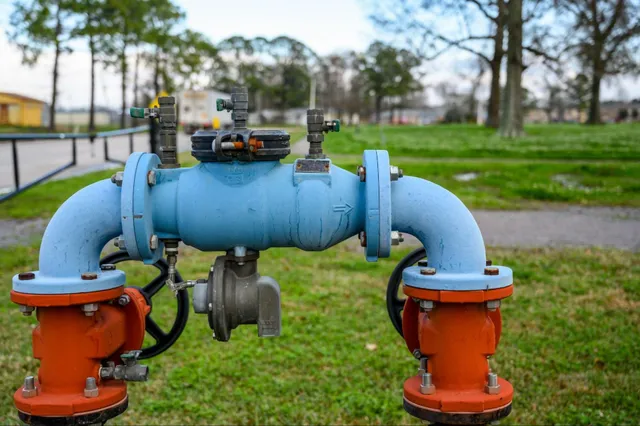How to Prepare Your Electrical System for EV Charging
With electric vehicles (EVs) rapidly gaining popularity, making your home ready for EV charging is a step every prospective or new EV owner should consider. A well-prepared electrical system ensures fast and reliable charging and protects your home and family from electrical hazards. For those seeking professional guidance or installation, Columbia, SC EV charging station installation by licensed electricians provides experienced local service to help homeowners transition smoothly to EV ownership.
Understanding the unique requirements of EV charging is essential before beginning any upgrades or installations. Failure to appropriately prepare your home can result in costly electrical issues or reduce your charging efficiency. An optimal home charging setup takes planning, compliance with code, and a clear assessment of your home’s current electrical infrastructure.
Understand EV Charging Levels
Chargers for electric vehicles come in three levels, each with distinct capabilities and requirements:
- Level 1: This basic charger connects to a standard 120-volt household outlet. It delivers roughly 3-5 miles of driving range per hour of charge—sufficient for plug-in hybrids or users with short daily commutes.
- Level 2: A much faster option, this charger utilizes a 240-volt outlet, like those used for clothes dryers or ovens. Level 2 chargers provide about 10-20 miles of range per hour, which makes them suitable for most fully electric vehicles and daily charging routines.
- Level 3 (DC Fast Charging): Commonly found in public commercial settings, DC fast chargers deliver an 80% charge in about 20–30 minutes. Due to their high power demand and unique installation needs, they are not intended for residential homes.
Understanding the differences between these levels is crucial to determining the upgrades your home may need and what equipment will best suit your charging habits.
Assess Your Home’s Electrical Capacity
A home charging station, particularly at Level 2, draws considerable power and may require adjustments to your home’s wiring or panel capacity. Start by inspecting your main electrical panel to check for available amperage and space for a new dedicated circuit.
- Panel Inspection: Most homes feature a 100–200 amp panel. A Level 2 charger generally requires space for a dedicated 40–60 amp breaker.
- Professional Evaluation: Always have a licensed electrician evaluate your system. They’ll identify necessary upgrades, such as adding subpanels or upgrading your main panel to accommodate the load safely.
Professional insight is especially important for older homes or houses with already near-capacity electrical panels. An expert can also help you anticipate future electrical needs, such as if you plan to add more high-power appliances.
Choose an Optimal Charging Location
Careful consideration of where to place your EV charger improves safety and usability. The ideal location is close to your vehicle’s parking spot, which minimizes the length of the charging cable and removes trip hazards. Consider both indoor and outdoor alternatives:
- Indoor installations (in garages) shelter your equipment from the weather and may reduce installation costs. However, they may require added ventilation to meet code requirements.
- Outdoor installations need weatherproof equipment but must allow easy access for multiple vehicles or guests. They should be positioned to avoid direct sunlight and heavy wind exposure.
- Above all, ensure the charger is easy to reach and that cords do not pose a tripping hazard.
Obtain Necessary Permits and Ensure Code Compliance
Local building codes frequently require a permit to install a dedicated EV charging circuit. Your city or county will have specific safety and code compliance requirements. Consult your local government’s building department and never skip this step—failure to get the right permits can create problems if you decide to sell your home or if there is ever a fire caused by improper installation.
- Engage a licensed electrician to install and secure the necessary permits.
- Ensure your installation passes final inspection before putting your charging station into regular use.
Consider Energy Costs and Off-Peak Charging
Energy costs for EV charging vary depending on when you charge and your local utility provider’s rate structure. Charging your EV during off-peak periods—late nights and early mornings—can significantly reduce your electric bill if your provider offers time-of-use rates.
- Check your utility company’s policies on off-peak and peak-hour rates.
- Use scheduling features on your EV or charger to start charging automatically during the most cost-effective times.
Ensure Safety During Installation
Safety cannot be overstated when preparing your home for EV charging. Only use charging equipment certified by a Nationally Recognized Testing Laboratory (NRTL). Never use extension cords or adapters not rated for EV charging, as they introduce serious risks of overheating and fire. Periodically inspect your charging cables and equipment for damage and replace them to maintain safety.
Stay Informed About Evolving Standards
The EV industry changes rapidly, constantly updating equipment, connectors, and software. Familiarize yourself with standards like the North American Charging Standard (NACS) and explore chargers offering smart connectivity so you can take advantage of features like remote scheduling and monitoring. This future-proofs your charging setup for new vehicles and emerging technologies.
Final Thoughts
Preparing your home’s electrical system for EV charging demands a balanced approach: understanding charging levels, evaluating your electrical infrastructure, optimizing charger location, adhering to safety and code, and staying up to date. Positioning yourself for a safe and efficient EV charging experience enhances daily convenience and future-proofs your home as electric vehicle adoption accelerates.
Keep an eye for more latest news & updates on NY Heading!





